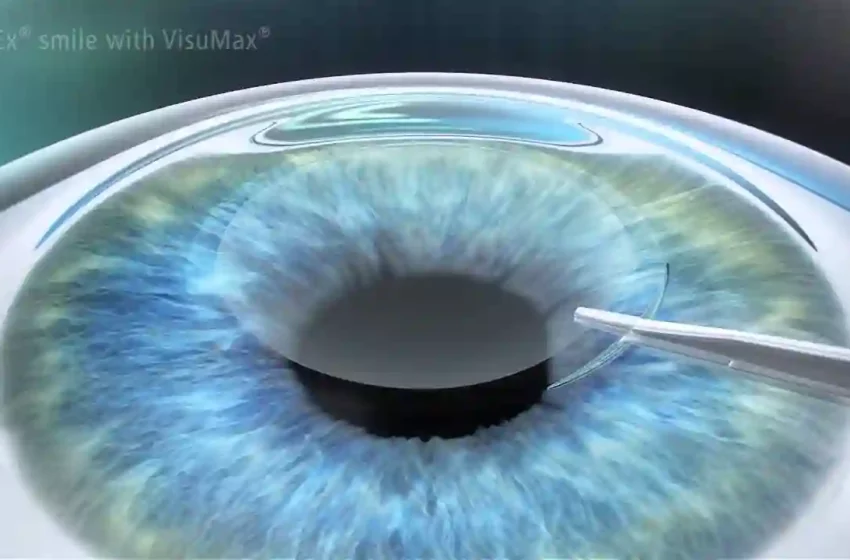You might have heard about the SMILE eye surgery. The SMILE is an advanced surgical technique that can correct a wide variety of vision problems. It is an effective alternative to the LASIK procedure.
SMILE vs LASIK
When it comes to eye surgery, there are several different procedures to choose from. One of these options is smile eye surgery los angeles. This procedure is designed to treat nearsightedness and myopia. It uses a femtosecond laser to remove a thin lenticule, a small layer of tissue in the cornea. Unlike LASIK, SMILE is a less invasive procedure. During the procedure, the surgeon makes four small corneal incisions around the iris. The femtosecond laser then extracts the lenticule from the central corneal layer.
There are several benefits to SMILE, including lower risk of complications and a shorter healing time. However, patients should be hypervigilant for any vision problems during the recovery period. LASIK and SMILE are both reliable, effective refractive procedures. Both methods offer a high rate of patient satisfaction. They both correct all types of refractive errors, though LASIK is more effective for some.
LASIK is more versatile and offers a longer-lasting result. Most LASIK patients achieve 20/20 vision after the procedure. If you are having trouble with your vision, an ophthalmologist can help you decide on the best method for you. SMILE is a relatively new eye surgery technique. It’s designed to treat myopia and astigmatism. Compared to LASIK, SMILE has fewer side effects and is faster to heal. However, SMILE has a slightly higher risk of hazy vision.
SMILE vs PRK
While LASIK remains the most popular refractive surgery, SMILE has started to gain ground. The latter offers several benefits over LASIK, including an overall faster recovery time and a lower risk of dry eye. In addition, SMILE has a less complex procedure and less risk of flap complications. SMILE is a type of laser vision correction strategy that involves a femtosecond laser cutting an incision in the cornea. A keyhole is then created, allowing the surgeon to fish out a disc-shaped tissue layer from the cornea. The corneal tissue is then reshaped with an excimer laser.
SMILE is similar to PRK, but it has a smaller incision and a faster recovery. It has a lower risk of post-operative dry eye and it’s also safer for patients at high risk for trauma. Smile eye surgery los angeles can be used to correct nearsightedness, myopia, and astigmatism. It’s also a good option for patients with thin corneas.
SMILE has a faster healing time than PRK, which means less discomfort during the first 4 hours. However, SMILE has a higher chance of blurry vision. To ensure you’re prepared for your procedure, schedule a thorough eye examination with your doctor. SMILE is not suitable for those with farsightedness or very thin corneas. Also, SMILE lacks customized treatment profiles for high astigmatism.
Dry Eyes After SMILE
The Dry Eye Syndrome is a common side effect of LASIK and SMILE eye surgeries. Both procedures involve the creation of a flap in the cornea that may interfere with the body’s natural tear production process. Some people require a second surgical procedure to resolve the issue. During a SMILE, a laser is used to reshape the cornea. In addition, a small flap is cut, and the flap is subsequently folded in. This creates a less-invasive approach to correcting refractive errors, and should help minimize dry eye symptoms.
In a study, the incidence of dry eye symptoms after a SMILE was lower than after a LASIK. Additionally, SMILE was better at promoting a quicker recovery of tear film function. It also produced a lower SEEQ score than FS-LASIK at one, three, and six months. In addition to these benefits, SMILE can also improve the patient’s visual acuity. Since it doesn’t sever nerves in the eye, it should be able to promote faster healing of the cornea.
Patients may experience dry eyes for a few weeks after LASIK, or for several months after a SMILE. It’s important to take measures to avoid infection during this time. Prescription eye drops may help alleviate minor discomfort. If you do experience an infection, it’s a good idea to contact your eye doctor immediately.
Final Thought
When you have a refractive error such as myopia or astigmatism, your vision will become blurry. This is because your cornea has an abnormal curvature. Your cornea needs to be reshaped in order to focus a clear image on your retina. Refractive lenticule extraction is a surgical procedure that can improve your vision.











